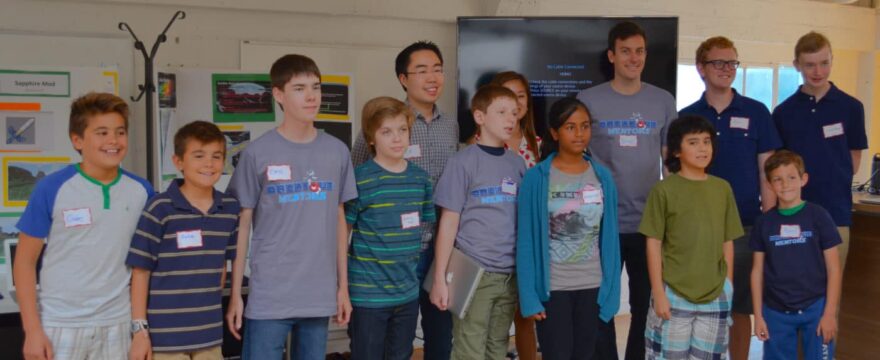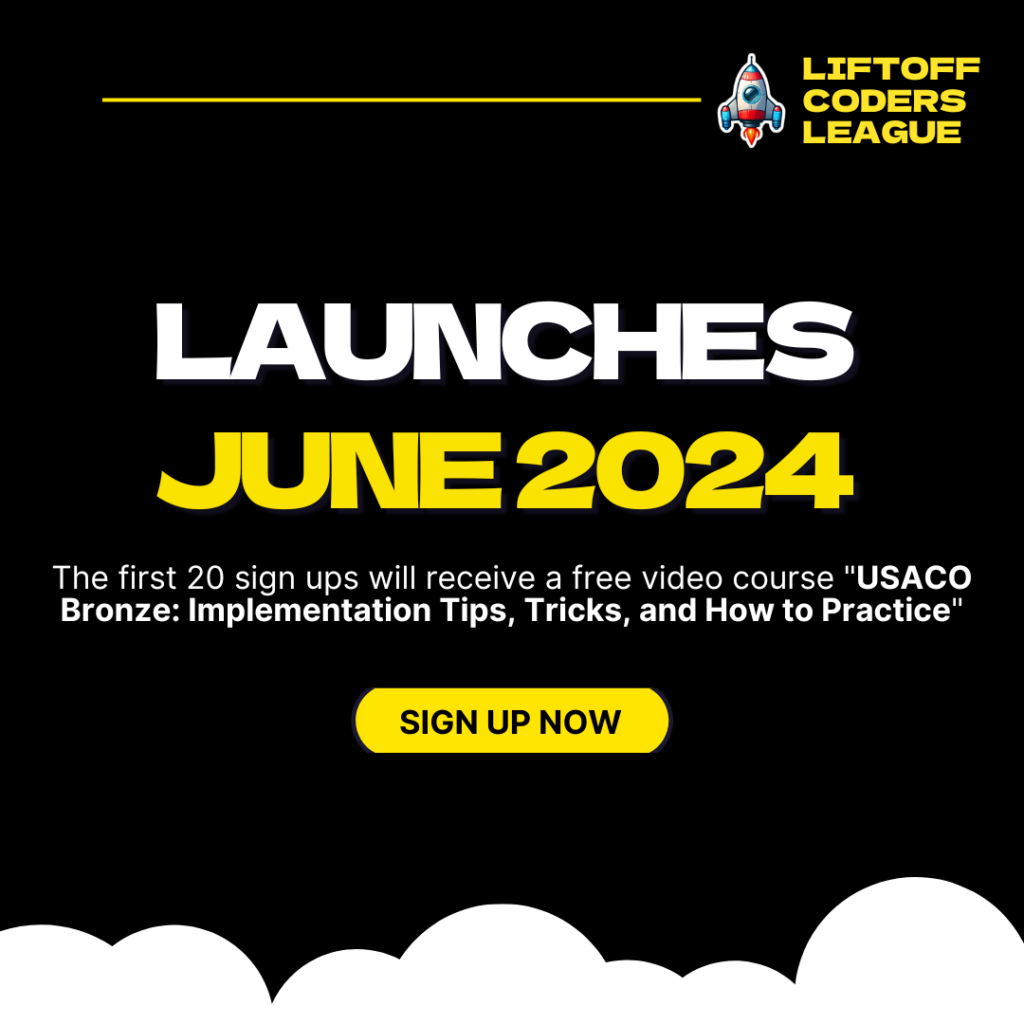The longer it has been since your childhood, the more you realize how different things are for today’s kids. Some better, some worse.
This isn’t one of those articles talking about playing out in the street until the dinner bell rings. I want to specifically explore education through the lens of coding.
I’ve had a front-row seat to kids coding over the last couple of decades. First as a smart kid myself, then at Stanford University, followed by founding the first personalized kids coding tutoring company.
As someone in my late 30s, what has changed for today’s kids? And more importantly, what hasn’t changed?
The Education System Moves Slowly
Education is fairly static. You go to school for the same number of hours and study the same subjects. As new areas of study like coding and computer science have arrived, schools have barely adjusted.
Luckily private companies and nonprofits sprung to action to fill in the gaps. There are many excellent solutions to get started, resulting in kids coding education being in a drastically different place than just a decade ago.
I want to take you through the recent history and observations from working with thousands of students. Only then will you fully understand the shortcomings still present for kids learning to code, including consistency and community.
I’ll share what I am doing to fix the problem and how your son or daughter can be a part of the movement.
The Early 2000s
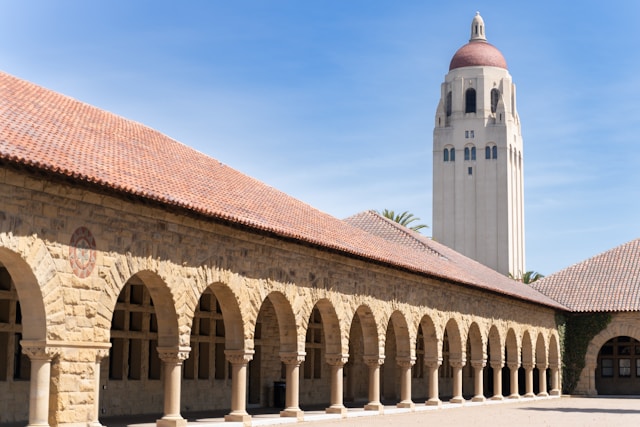
Back in the early 2000s, finding ways for kids to learn coding was like searching for a needle in a haystack. There just weren’t many options out there. Most kids didn’t even get a chance to dip their toes into the world of computer science until later in their lives.
Take me for example. I was a pretty sharp kid, including advanced math tracks and performing well in regional mathematics competitions.
Yet coding didn’t even register on my radar as a potential activity. I arrived at Stanford University knowing absolutely zero about computer science. CS is incredibly popular at Stanford though, so I took the intro course and haven’t stopped since.
I wish I had started earlier and arrived at college with a strong understanding of the fundamentals. This would have allowed further study in college, including taking more upper division courses.
I also wish I had exposure to computer science from a brain development standpoint as well. It is such a unique subject for learning the engineering thought process, using only your mind and a keyboard. Coupled with useful abstraction and an incredible depth of knowledge that is possible, it is a very unique subject.
Since computer science is not thoroughly taught in schools, kids and teenagers who pursue it are able to move entirely at their own pace. It is a wonderful opportunity for sharp students to challenge themselves and not be held back by the speed of the whole classroom.
The Early 2010s
As the years rolled on, things started looking up. Kids coding languages like Scratch were growing in popularity and companies like iD Tech Camps became mainstream. This gave early exposure to coding for many kids and teenagers.
The kid’s coding movement began gaining steam, and it felt like we were on the brink of something great. Yet, when I took a closer look, I realized the options available were pretty underwhelming. Kids were stuck with short-term summer camps and tutorials that while engaging, weren’t building up to anything. There was a big gap between what was out there and what kids needed: a more comprehensive, year-round approach to learning coding.
It was at this time that I became frustrated with the shortcomings of the kids coding options. Everything was focused on providing the initial exposure and spark of interest for coding. That’s wonderful, but what happens next?
At worst, a spark of interest may die out if it isn’t nurtured. At best, the student will return to coding in high school or college. What a wasted opportunity to build the fundamentals, deepen their interest in the subject, and train their brain.
The Start of Breakout Mentors
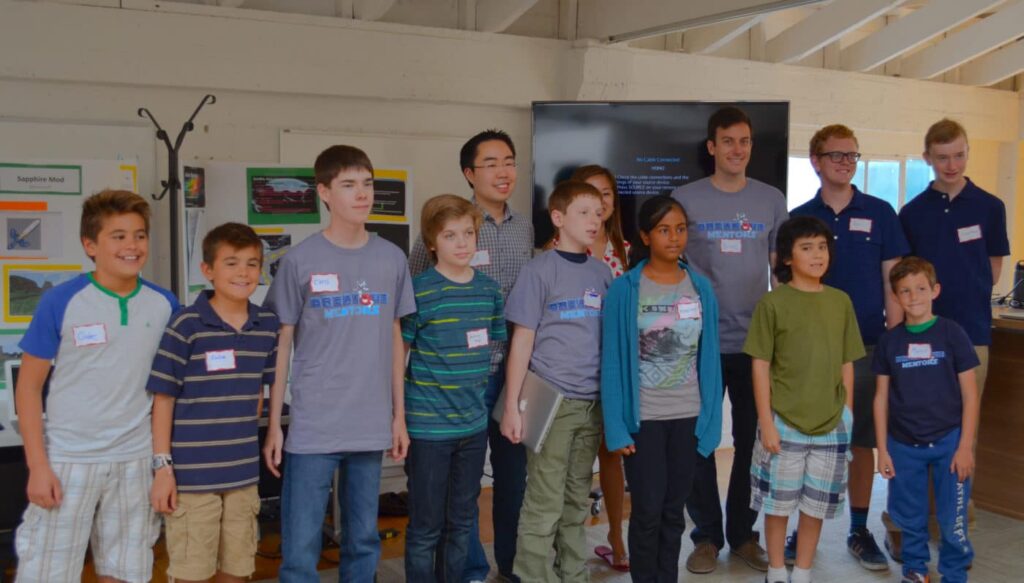
I started a company, Breakout Mentors, to provide 1-on-1 project-based coding education. We built everything from the standpoint of the student’s long-term advancement.
The first requirement is to keep students interested. We accomplish this through letting the students make a series of exciting projects. The curriculum isn’t too rigid, which allows the kids to be creative and work on games they are interested in.
Plus, a personal connection with the mentor helps as well. The mentor is able to perfectly adjust the difficulty, so students don’t get frustrated if it’s hard, nor bored if it’s easy.
This approach has allowed us to take anyone aged 8 to 17 from beginner to intermediate to advanced. It might take months or years of learning effort, but it has a lasting educational impact.
Others Join the Party
We were one of the first of many organizations focused just on coding. Soon there was a flood: everything from companies to non-profits. From after-school centers to online learning.
I helped start the Silicon Valley chapter of CoderDojo, which is a non-profit kids coding club. These clubs saw tremendous growth in the United States from 2013 to 2018. We ran the largest chapter for years, helping hundreds of kids start coding.
It was also at this time that Code.org started. It is an impactful nonprofit that runs the Hour of Code, encouraging every school in the world to spend one hour coding in school every December. They have invested millions of dollars in a free online curriculum, which anyone can use. (So don’t think that another organization’s in-house curriculum is a differentiator — if they aren’t drawing from the best, is their curriculum going to be as impressive as Code.org’s that spent ten times more and has been used by millions?)
Others have joined the space as well, including several notable companies formed by fellow Stanford alumni and in Palo Alto. The Coder School is a franchise model like Kumon to bring kids after-school coding centers to strip malls. Juni Learning is a venture capital backed 1:1 online learning environment. CodeHS sells a computer science platform and series of courses to school districts.
By the late 2010s coding education was widespread.
In the Last Four Years
The pandemic changed education rapidly. Suddenly online learning didn’t have the stigma for kids that it once did. Particularly when learning from a person live over video conferencing, not just watching videos or completing tutorials.
Kids enrichment education, including coding, saw tremendous growth due to canceled sports, homework, and summer vacations. Breakout Mentors doubled in size nearly overnight.
However, with so many options for coding, what sets each option apart? I would argue that Breakout Mentors is the best long-term solution for building an interest and skills that stick. We work with many students who have bounced around several other coding options and already have some experience. This, coupled with the fact that we have advanced students we’ve worked with for years, have pushed us towards more challenging computer science.
One of those exciting areas for new challenging coding is the USA Computing Olympiad (USACO).
The Rise of USACO Competitive Programming
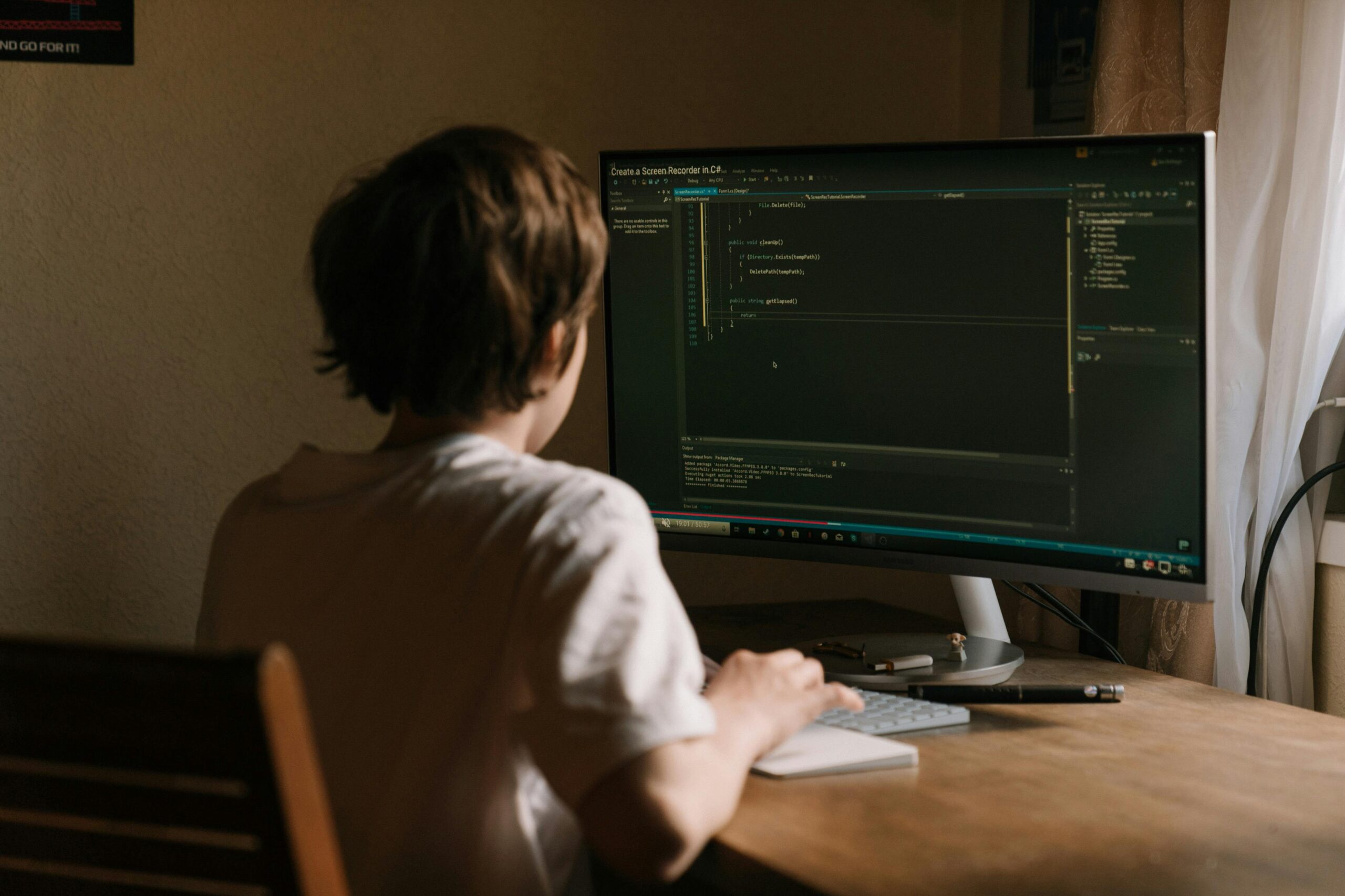
USACO has been around for decades, but its popularity is increasing faster than ever. What is it? A prestigious online contest, primarily for high school students, that gives algorithmic problems to solve using code. There are divisions Bronze, Silver, Gold, and Platinum, and promoting from one to the next is an impressive achievement.
It is a tremendous way to put theory into practice. Can you write code quickly that works? Can you have the right problem solving insights? Can you learn college level computer science to make your solutions more efficient?
In December 2019 there were 5831 Bronze competitors. This year there were 12591. It’s growing over 20% per year with no signs of slowing down.
Many consider USACO to be the pinnacle of achievement for high school students — the best way to demonstrate their computer science skills and a significant credential for college applications. And that is the aim in high school, you better believe that parents have started to think about getting started earlier. They think: why not middle school so their son or daughter is fully prepared?
The Competitive Programming Landscape in Middle School
Starting to look at USACO Bronze problems before a student is ready can backfire. Why? It isn’t an ideal way to master the fundamentals and advancement will be slow, which is demotivating.
I encourage people to think of USACO as two separate skills. First, there is the coding or computer science knowledge, including the practice of writing code that works. Second, you need to master the specific problem-solving insights necessary for your division. This is the hard part, and if you are using your brainpower on the code itself, it’s going to be tough to advance.
It is better for kids who haven’t mastered the coding fundamentals and aren’t fully independent with their coding abilities to work on something else. I recommend project-based learning, which is fun and adjusts well to a wide range of skill sets.
How do you know if you are ready to look at USACO Bronze though? Are there easier competitive programming contests for middle schoolers to use as a measuring stick?
Unfortunately there aren’t many options. American Computer Science League (ACSL) is one, but it is for teams that compete together in-person. This makes it very hard to participate, as someone interested would have to form a team and find a coach at their school.
Kids need a way to participate individually and join an existing community. They also need consistency to grow their skillset, not just four contests per year.
Announcing Liftoff Coders League
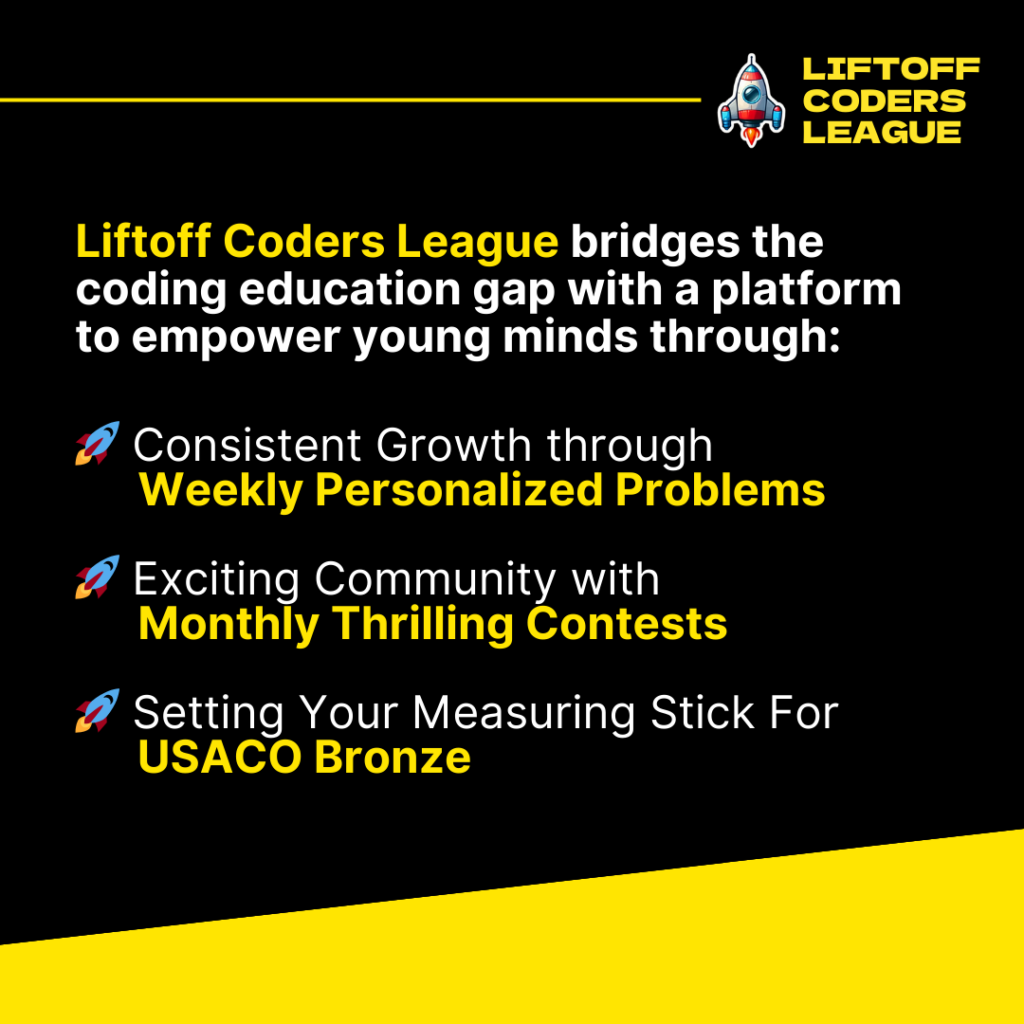
The Breakout Mentors team is excited to announce Liftoff Coders League, the launchpad for tomorrow’s competitive programming champions. It is going to start in June 2024 and cover many of the shortfalls in the kids coding education landscape.
Our aim is simple: provide the opportunity for consistent growth in coding independently and build an exciting community through live contests. This will help students prove they are ready for USACO Bronze.
Here’s how we’ll help your son or daughter reach their goals.
Steady Advancement with Custom Weekly Challenges
Progress in any discipline, including programming, is achieved through consistent practice. Despite being in a structured course, we often observe that children receive excessive guidance and lack sufficient opportunity to code on their own.
Each week, students of Liftoff Coders League are presented with a unique coding problem tailored to their skill level, solvable within 30 minutes using Python. Solutions are revealed weekly, and the difficulty of subsequent challenges adjusts according to their performance.
Kids stay motivated when they see progress towards a larger goal. Liftoff Coders League includes divisions to advance through, streaks and other milestones to celebrate. Participants will collect unique digital and physical stickers. For those in the US, stickers can be sent by mail to put them on personal items like water bottles, skateboards, or laptops.

Vibrant Community and Monthly Exciting Contests
Learning to code can feel very isolating. Any time you can learn alongside others at a similar skill level, it provides continued motivation. Liftoff Coders League offers a vibrant atmosphere where kids coders can compete against others with shared passions.
Our live, monthly competitions are a way to unite the community, featuring leaderboards and social integrations to foster connections. The contests are designed to be fun and stress-free, more like a party than a stressful test. Regular competition also prepares students for the rhythm of timed contests like those in USACO.
Benchmarking Success and Preparing for USACO Bronze
Liftoff Coders League is your measuring stick for coding proficiency. It challenges students to apply fundamental coding skills effectively and to debug efficiently.
Jumping into USACO Bronze prematurely is a common mistake. USACO demands strong problem-solving skills — if basics like how to use loops and arrays are still a hurdle, students will struggle. Through Liftoff Coders League, challenges gradually increase in complexity, offering a solid foundation in coding. Achieving the top division signals readiness for USACO Bronze problem-solving. Consider this league as essential groundwork for those aiming for USACO Bronze, ensuring a strong grasp of the fundamentals.
Launching in June 2024
We’re actively developing the Liftoff Coders League platform and crafting challenges. Early registrants will find enticing incentives to join and influence the program’s development.
The first 20 registrants will receive a complimentary USACO Bronze video course. This is the course Breakout Mentors made to cover the implementation tips and tricks you should know. It is 68 minutes of video with 24 code samples.
An exclusive sticker awaits founding members, along with the chance to invite friends to the league, heightening the competitive spirit.
We are launching at the low price of $39 per month and also have a massive 35% discount when paying annually. To join, please visit our registration page.
